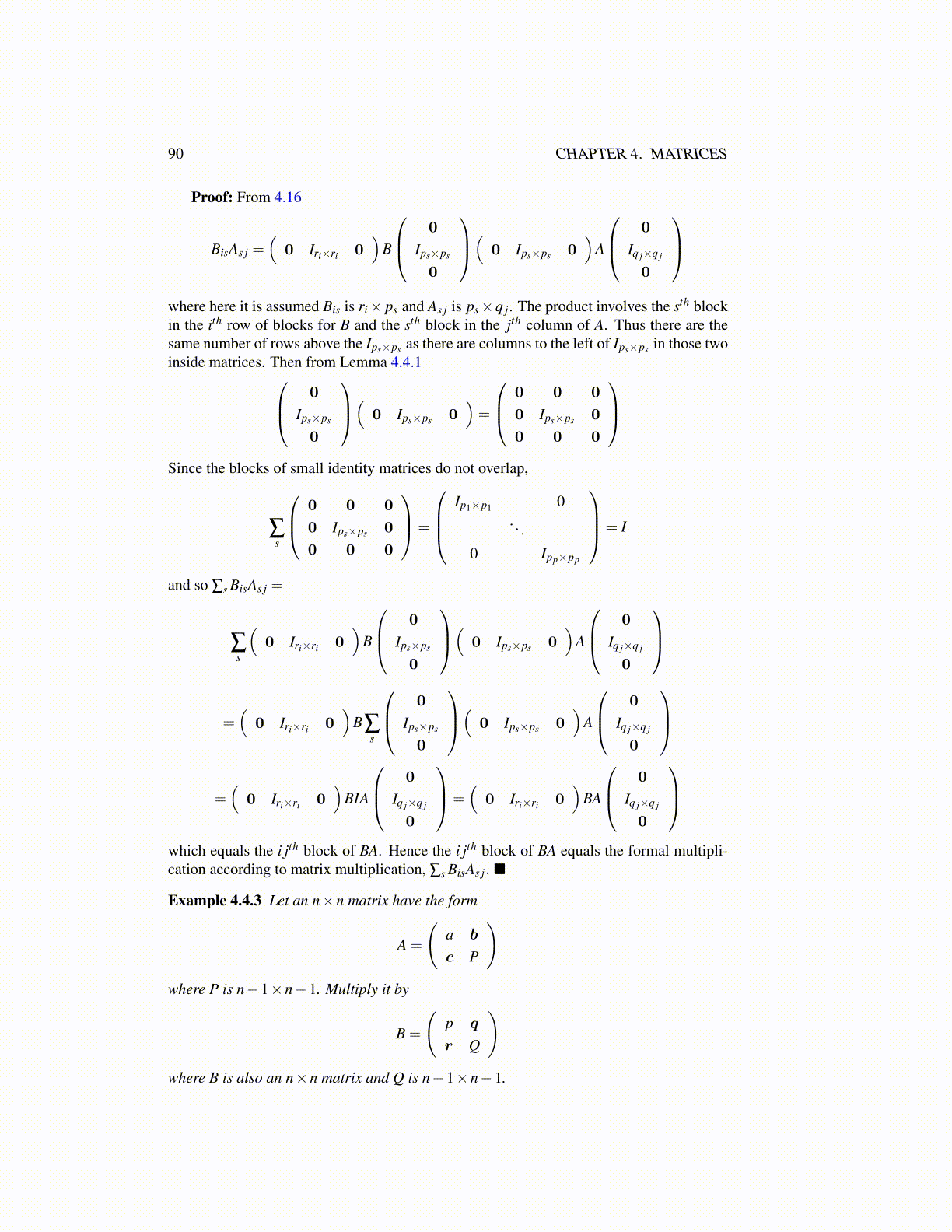
90 CHAPTER 4. MATRICES
Proof: From 4.16
BisAs j =(
0 Iri×ri 0)
B
0
Ips×ps
0
( 0 Ips×ps 0)
A
0
Iq j×q j
0
where here it is assumed Bis is ri× ps and As j is ps×q j. The product involves the sth blockin the ith row of blocks for B and the sth block in the jth column of A. Thus there are thesame number of rows above the Ips×ps as there are columns to the left of Ips×ps in those twoinside matrices. Then from Lemma 4.4.1 0
Ips×ps
0
( 0 Ips×ps 0)=
0 0 0
0 Ips×ps 0
0 0 0
Since the blocks of small identity matrices do not overlap,
∑s
0 0 0
0 Ips×ps 0
0 0 0
=
Ip1×p1 0
. . .
0 Ipp×pp
= I
and so ∑s BisAs j =
∑s
(0 Iri×ri 0
)B
0
Ips×ps
0
( 0 Ips×ps 0)
A
0
Iq j×q j
0
=(
0 Iri×ri 0)
B∑s
0
Ips×ps
0
( 0 Ips×ps 0)
A
0
Iq j×q j
0
=(
0 Iri×ri 0)
BIA
0
Iq j×q j
0
=(
0 Iri×ri 0)
BA
0
Iq j×q j
0
which equals the i jth block of BA. Hence the i jth block of BA equals the formal multipli-cation according to matrix multiplication, ∑s BisAs j. ■
Example 4.4.3 Let an n×n matrix have the form
A =
(a b
c P
)where P is n−1×n−1. Multiply it by
B =
(p q
r Q
)where B is also an n×n matrix and Q is n−1×n−1.